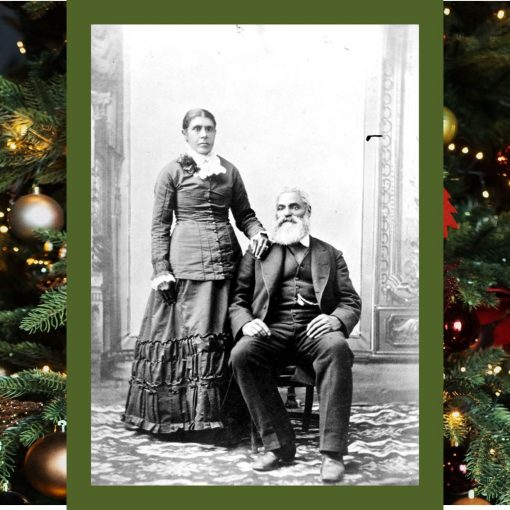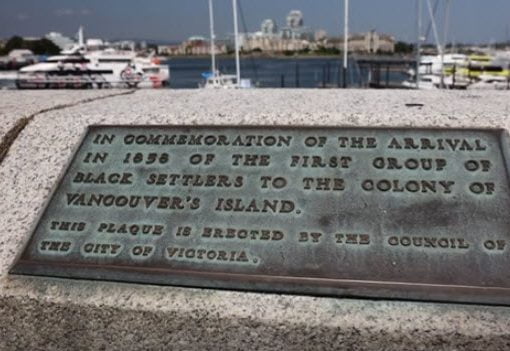In February 1860 he was the 1st Black to sit as a juror in B.C.
![]()
Peter Lester moved with his wife Nancy and five children to San Francisco from Philadelphia in 1850, where he was appalled to find that slavery was still a fact of life in the free state of California. In an attempt to do something about this, he invited slaves and domestic workers into his home to educate them about their rights and to teach them anti-slavery songs.
Lester was making his living as a bootblack and boot maker in San Francisco when he met Mifflin Wistar Gibbs in the early California gold rush days. They became partners in the firm Lester & Gibbs, and opened up a successful shoe store in 1851 bearing the name (according to Mr. Gibbs) “Emporium for Fine Boots and Shoes, imported from Philadelphia, London and Paris.” This business saw wide success in both wholesale and retail, and the pair became wealthy.
However, Peter Lester was not pleased with the way blacks were treated in California. In one incident, two white men assaulted him in his store with a cane and stole a pair of shoes; he could not press charges against the men because courts did not allow testimony by African-Americans. Then in 1858, Lester’s 15-year-old daughter, Sarah Lester, became part of a local uproar when the pro-slavery San Francisco Herald printed an anonymous letter demanding her removal from an otherwise all-white school. After several weeks of active debate on the matter, Peter removed his daughter from the school.
In response to these events, as well as a newly introduced measure by the state legislature to ban any black immigration to California, the Lester’s decided to join the exodus of African-Americans to Victoria in Canada.
While the Lester & Gibbs business was prominent in early Victoria, Lester himself was a private man and left no documents or papers, so it is speculation that he may have felt some satisfaction that he was the 1st Black to sit on a jury in the Vancouver Island colony.
A brief article in the Colonist on February 18, 1860 reads as: “A negro on the Jury list”: The article state that Mr. Peter Lester, a Black grocer, was the first juror called in the Butts case. Butts objected to him at first, but Lester was allowed to take his seat with the jury.”
It was not until November 26, 1872 that Blacks were formally added to jury lists.
Lester is listed on the 1875 voter’s list as a resident of Vancouver Street where he lived with his wife Nancy. He also owned 9 other properties.
The Lester's daughter Sarah, taught piano, they also had 2 sons, Peter, a building painter and Frederick Douglas, a carpenter; there are also records of 2 grandchildren Blanche and Frederick Jr, children of Frederick and Octavia.
Tax records also show that between 1864 and 1871, Lester and Sydna Francis owned a property on Johnson Street and paid the taxes. It is believed this was to help Sydna and her husband Abner Hunt. Abner, a shopkeeper, went bankrupt in 1863, and was not insured when his store burnt down in 1870.
Unfortunately, no records have been found of when or where Peter Lester died. His wife Nancy died at the age of 82 in February 1892 and is buried at the Ross Bay Cemetery.
An article appears in the Colonist 1890-08-17 - “RAMBLING REMINISCENCES - A chat with Mr. Peter Lester about the Early Days”. The conversation takes place at Peter Lester's home on Vancouver Street. The following are excerpts from the article.
Almost every pioneer of Victoria knows Mr. Peter Lester. He was “one of them” in the early days, when the Queen City was nothing but a great camp…. Almost forty years ago Mr. Lester’s kindly face was first seen in Victoria. … Many are the stories which in an idle hour Mr. Lester can tell of those early days and of days earlier still when the law of might not right kept hundreds of unhappy men and women in the galling bonds of slavery in the soft and sunny south.
The writer calls on Mr. Lester not so long ago and snugly ensconced himself in an armchair, turned idly the leaves of an old photograph album, while listening to tales of pioneer days. Each picture in the album had a story of all its own …
The album included the following people: Samuel D. Burris, Frederick Douglass, Rev. W.H. Furness, Thomas Garrett, Wm. Lloyd Garrison, John Hunt, J. Miller McKimm, Lucretia Mott, John Nudles, Robert Purvis, Samuel Rhodes, Lewis Tappan, Em. Whipper, and Charles Wise. Brief details about these people are at the end of this article.
Our friend Lester, who knew, lived and worked with each of them, can recall many stories of their day which makes a chat with him a pleasure and not soon to be forgotten. His personal history would make by no means an uninteresting tale.
Born in South Carolina he moved to Philadelphia when only twenty-one years of age. He saw the rise of the anti-slavery cause, and saw Philadelphia Hall built for the free discussion connected with the public weal and saw it levelled to the ground in ashes.
He watched and took part in the struggle for the freedom of the colored race, when the greatest enemies to the grand work of reform were the ministers and the churches.
In 1850, Mr. Lester left Philadelphia and made his home in San Francisco, at that time a hotbed of lawlessness and crime. The city was in the hands of gamblers and cutthroats, and only when the men who made San Francisco what it is today, formed themselves into a vigilante committee, were the gamblers, murderers and thieves driven forth, and the safety of the city secured. Notwithstanding the wild and un-uncivilized ways of California in ’50 the state was always solid for right and justice. Many a time was a slave told he was free and his master compelled to consider him a man by these old pioneer Californians.
In 1858 Mr. Lester came to Victoria. Not the Victoria of today but a city little-like our busy city…”
The remainder of the article is about the Hudson’s Bay Company.
The following provides some context for the people in the album who Lester knew in the U.S.
- Samuel Burris: (1808-1868): Samuel Burris, a former slave himself, was a conductor on the Underground Railroad in the mid-nineteenth century.
- Frederick Douglass (1818-1895) Best known for his extensive and prolific abolitionist activities. He is also well-recognized as a social reformer, abolitionist, orator, writer, and statesman. After escaping from slavery in Maryland, he became a national leader of the abolitionist movement in Massachusetts and New York. He traveled often abroad and extensively across the U.S and notably in 1843, Douglass joined other speakers in the American Anti-Slavery Society's "Hundred Conventions" project, a six-month tour at meeting halls throughout the United States.
- William Lloyd Garrison By 1854 he was the most prominent abolitionist in the United States. Beginning with his newspaper, the Liberator, which he established in Boston in 1831, Garrison led the effort to end slavery in the nation.
- Lucretia Mott () political activist, women’s rights advocate
- Robert Purvis (1810-1898) Helped to establish the Library Company of Colored People as well as the Anti-Slavery Society in Philadelphia, both of which engaged in abolitionist activity.
- Lewis Tappan: a white Brooklyn, New York abolitionist.
- William Whipper (1804-1885) born in Little Britain, Lancaster County, Pennsylvania on February 22, 1804; was best known for his activities promoting the abolition of slavery. in 1850, the conditions in Lancaster, Philadelphia became unfavorable for African Americans. This prompted Whipper’s move to Canada where he continued as a prosperous businessman. Whipper returned to Philadelphia after the Civil War.




